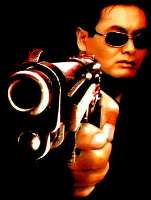
So you have made the decision to learn Chinese. Excellent! Now what? What’s the best method to learn Chinese?
Obviously if you could just pack up your things and move to China, that might be a good start, but even that alone isn’t enough (as I found out the hard way). So what should you do when you get there? Or what can you do to prepare first?
Well, fortunately you have lots of choices (which may or may not be a good thing). Should you join a class? Find a one on one teacher? Look for a language exchange partner? Invest in books, CDs or other self study courses?
Well the truth is, no single method is good enough on its own (which is why this post is titled “best strategy” and not “best method”). You could invest in the Pimsleur series and master it completely. But even that will only get you familiar with a limited aspect of the language.
A classroom approach might be great for some. However you may be shocked to find the outside world not following the rules and structure taught in class. So maybe “learning by doing” is the answer.
Forget about formal training and learn by making mistakes – get out there and learn what people are saying in the real world! Unfortunately that too doesn’t work for most personalities, plus this approach lacks the structure and system required to explain what it is the people out there are saying.
The solution then is a combination of all of the above.
For my first few years in Taiwan and up till now, all my Chinese was self taught using a combination of self study courses and books out there. I was able to pick and choose the areas I wanted to focus on, in a manner that worked best for me and my personality.
In the last month, I have enrolled in a university course, which is my first formal study of Chinese. This has opened my eyes to new methods of learning that I wasn’t exposed to previously.
While my listening and speaking skills are good for my level, my reading and writing skills are much lower than my classmates. This indicates to me that while this particular course I’m in is great at teaching reading and writing, it can improve in teaching listening and speaking.
You will see some of the ideas and concepts I have been experiencing added to the CLO course over the next little while. The idea is to provide a smorgasbord of learning methods, allowing listeners to choose which methods work best for them, and which areas they want to focus on.
Don’t feel compelled to have to use every new feature and tool being introduced. Imagine you are walking through the street scene pictured above. You don’t need to go to visit every shop to find what you need.
However, if enough resources are made available, there should be something for everyone, and you should be able to tailor make a strategy that meets your particular needs.
It’s been very rewarding for me to get to know you listeners as individuals, and what your own personal goals and strategies for learning Chinese are, and what techniques I can implement to help you out.
The CLO course looks very different today than what I envisioned a year ago when I first started. With your help, I expect it to look a lot different a year from now, so keep the feedback coming!




